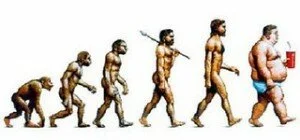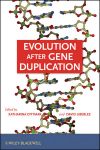 Forget microwaves and frying pans. In six volumes and 2,438 pages, the new cookbook Modernist Cuisine trades traditional appliances for cutting-edge machinery more commonly found in science laboratories than household kitchens.
Forget microwaves and frying pans. In six volumes and 2,438 pages, the new cookbook Modernist Cuisine trades traditional appliances for cutting-edge machinery more commonly found in science laboratories than household kitchens.
Modernist Cuisine was born in 2004, when in billionaire mathematician and physicist Nathan Myhrvold began explaining sous vide cuisine in eGullet’s online forums. At the time, no one had ever written a book about the French technique in English, so he took it upon himself to write such a book. However, as Myhrvold developed the book, he kept finding reasons to expand its scope. For instance, the sous vide method of cooking works by sealing food in an airtight bag and then submerging it in a hot water bath. How could anyone fully understand this technique without understanding the basic physics of heat and water? Moreover, wouldn’t ordinary people like to understand how traditional cooking actually works?
As a result, Modernist Cuisine is a cookbook that, instead of explaining how to cook, explains exactly what is happening when you cook. This type of cooking is called molecular gastronomy: the application of science to culinary practice. 1 The term was actually coined by two scientists: physical chemist Hervé This, who currently works as scientific director of the foundation “Food Science & Culture” at the French Academy of Science, and physicist Nicholas Kurti.
Because it combines the precision of scientific measurement with the inventiveness of cooking, many of the recipes in Modernist Cuisine better resemble scientific protocols than home-style recipes. The book’s hamburger, for instance, takes 30 hours to prepare. The lettuce and tomato are flavored using a vacuum sealer, the cheese is molecularly restructured with carrageenan (i.e. seaweed extract), and the hamburger patties themselves require hand-grinding the beef. Yet, Myhrvold attests that the majority of his recipes can be followed using standard kitchen appliances. The sous vide technique, for example, can be mimicked on an ordinary stovetop using a pot and a thermometer.
Whether or not his methods can be replicated in ordinary kitchens, Myhrvold is striving to revolutionize the norms of cooking. “Seeing things like propylene glycol alginate in an ingredient list may take some getting used to,” he says, “but it should be no stranger than a meringue recipe calling for cream of tartar.” In response to critics who claim that his precise, scientific approach eliminates the “soul” from cooking, Myhrvold says, “The idea you would rely on intuition to judge something you are terrible at judging makes very little sense to me. Why don’t you blindfold yourself, too?”
| Resources from Wiley on This Topic | |
 |
Professional Cooking, 7th Edition
by Wayne Gisslen |
 |
Handbook of Fruit and Vegetable Flavors
by Y.H. Hui, et al. |
 |
How Baking Works: Exploring the Fundamentals of Baking Science, 3rd Edition
by Paula I. Figoni |
1.This, H. (2005). Molecular gastronomy Nature Materials, 4 (1), 5-7 DOI: 10.1038/nmat1303
 The famous phrase has it that evolution is a process of the “survival of the fittest.” However, it should be noted that this doesn’t imply some great evolutionary gymnasium, with species pumping and sculpting themselves into the most sexually appealing shapes of the day. Rather, the phrase means something more like “the survival of the aptest”—that is, that those whose bodies are genetically best “fitted” to their environment are those who are most likely to survive and to pass their extra-suitable genes on to future generations.
The famous phrase has it that evolution is a process of the “survival of the fittest.” However, it should be noted that this doesn’t imply some great evolutionary gymnasium, with species pumping and sculpting themselves into the most sexually appealing shapes of the day. Rather, the phrase means something more like “the survival of the aptest”—that is, that those whose bodies are genetically best “fitted” to their environment are those who are most likely to survive and to pass their extra-suitable genes on to future generations.

